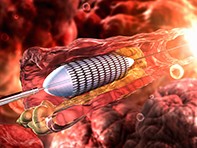Peer Reviewed
Perspectives
New developments in coronary stent technology
Abstract
Coronary artery disease is the leading cause of death and morbidity in the world. Significant coronary artery lesions may be treated by percutaneous coronary intervention, typically balloon angioplasty and stent implantation. A new generation of drug-eluting coronary stents are undergoing clinical trial evaluation and are being introduced into clinical practice. Out of all emerging stent technologies, fully bioresorbable scaffolds hold promise as being the most debated, ambitious and intuitive concept.
Key Points
- Percutaneous coronary intervention has revolutionised the treatment of coronary artery disease.
- Metallic coronary stents provide a vascular scaffold to maintain luminal patency after coronary artery dilation.
- Traditional coronary stents are associated with a small but significant risk of stent thrombosis.
- Bioresorbable stents provide temporary scaffolding after angioplasty but are subsequently fully resorbed with multiple theoretical benefits. Their safety and efficacy are yet unproven in large randomised clinical trials.
Purchase the PDF version of this article
Already a subscriber? Login here.

